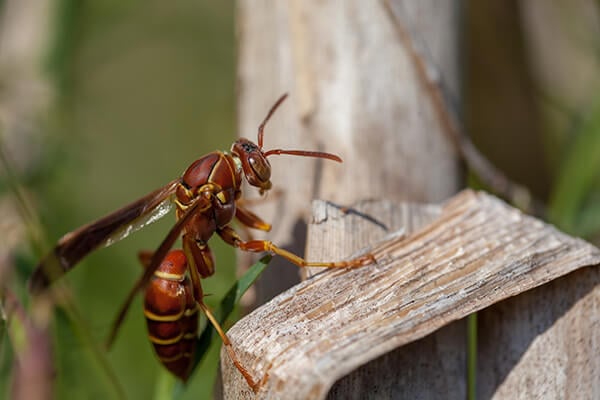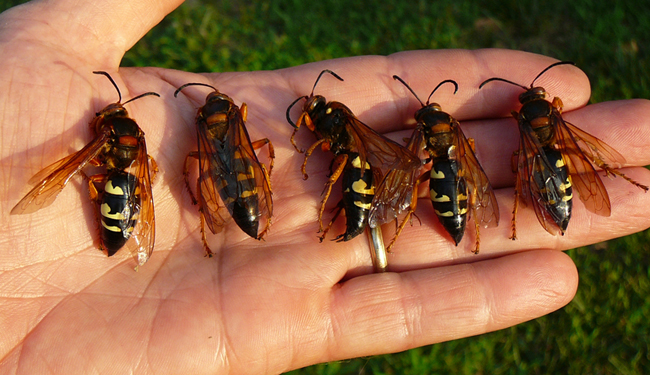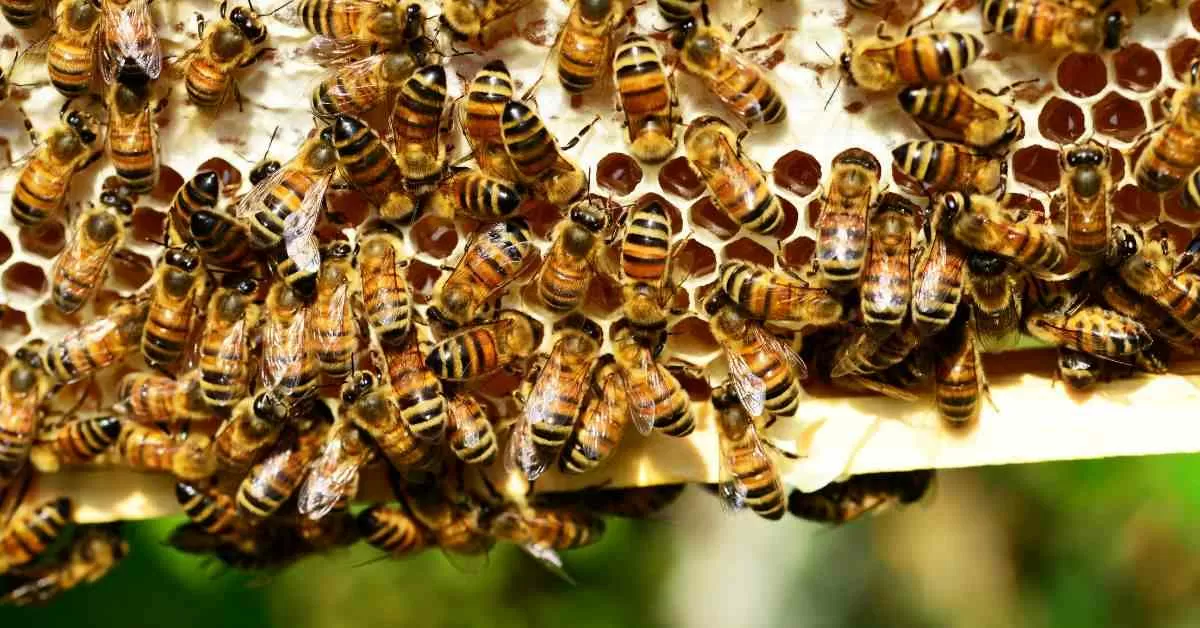Animals like snakes, mongooses, scorpions, and spiders are known for being dangerous. Some bite, some sting, and others carry venom that can kill. But danger doesn’t always come in a big package. Sometimes, it flies and buzzes.
Bees are tiny insects that often buzz around flowers. Most are good and harmless to nature; some are deadly. But the deadliest is the so-called Africanised honey bee, or killer bee.
According to Guinness World Records, it holds the title of the most dangerous bee in the world. These bees attack in huge numbers, chase their target for long distances, and sting again and again. These bees have been recorded to kill more than a thousand people.
In this article, we’ll take a closer look at the most dangerous bees in the world and find out what makes them so deadly.
List of Top 10 Most Dangerous Bees in the World
According to Guinness World Records, here’s the list of the top 10 most dangerous bees in the world:
| Rank | Insect | Danger Summary |
| 1 | Africanized Honey Bee | Known as “killer bees”, extremely aggressive. Attack in swarms, chase victims for miles. Responsible for over 1,000 deaths. |
| 2 | European Hornet | Large, aggressive, and social. Can sting multiple times. Painful sting with strong venom. Night-active and drawn to light. |
| 3 | Bald-faced Hornet | Highly territorial and aggressive. Sting causes intense pain, swelling, and even breathing issues. Found in large nests. |
| 4 | Paper Wasp | Builds papery nests. Generally calm but stings when threatened. Painful sting with risk of allergic reactions. |
| 5 | Eastern Cicada Killer | Huge wasps that mainly hunt cicadas. Not aggressive, but stings are very painful if provoked. |
| 6 | Yellowjacket | Common picnic pests. Highly aggressive and sting repeatedly. Account for most bee stings in the U.S. |
| 7 | Wool Carder Bee | Males have sharp leg spikes; females sting. Not very aggressive to humans but can hurt and displace other bees. |
| 8 | Carpenter Bee | Females sting when threatened. Males bluff aggression. Known more for wood damage than stings. |
| 9 | Honey Bee | Docile, but will defend the hive. Stings once and dies. Can trigger severe allergic reactions. |
| 10 | Bumblebee | Usually gentle, but females can sting multiple times. Painful stings cause redness and swelling lasting for days. |
#1. Africanized Honey Bee (Apis mellifera scutellata)

Source: Absolute Exterminating
This hybrid bee from Central/South America reached the U.S. (Texas) in 1990. It is called the “killer bee” because it defends its hive faster and in larger numbers than other bees. When threatened, hundreds can attack mercilessly, chasing intruders up to a quarter mile.
A toxic mass sting, over 200 stings, can kill an adult within hours by causing kidney failure, shock, and organ damage. They have caused over 1,000 human deaths in South America and a handful in the U.S.
#2. European Hornet (Vespa crabro)

Source: Sussex Wildlife Trust
The European hornet is native to Europe and was introduced to North America in the mid‑1800s. It builds large paper comb nests in hollow trees or walls. While not overly aggressive, it fiercely defends its nest and can sting repeatedly.
Its sting is painful and may cause intense swelling, nerve pain, and allergic reactions. A single sting rarely kills—death usually occurs by allergy—but multiple stings or anaphylaxis can be fatal. Thousands of hornet-related deaths in Asia highlight the risk of mass stings.
#3. Bald‑Faced Hornet (Dolichovespula maculata)
Source: The Source
This North American hornet makes round, paper nests carrying hundreds of individuals. They aggressively defend their colony. The sting is extremely painful, inflames nerves, and may trigger breathing trouble, a fast heartbeat, and allergic shock.
While a single sting rarely kills, a swarm attack can send allergic people into anaphylaxis. They have been linked to multiple severe sting incidents and deaths, especially when nests are disturbed.
#4 Paper Wasp (Polistes dominula)

Source: Plunkett's Pest Control
Paper wasps live in Europe and North America. They build open, umbrella-shaped nests from chewed wood. These wasps usually stay calm but defend their nests fiercely if disturbed. A sting is sharp and painful, causing redness, swelling, and possible allergic reactions.
In rare cases, massive attacks or allergies can be fatal through anaphylaxis. They do not chase people far, but a nest left alone is best. They are less deadly than hornets or yellowjackets.
#5 Eastern Cicada Killer (Sphecius speciosus)

Source: The Atlantic
This large wasp lives in eastern North America. Females hunt cicadas to feed their young. Generally calm unless grabbed or stepped on.
Their sting feels like a sharp pinprick, causing brief pain and small swelling. They don’t chase people. Fatal stings are extremely rare. No human deaths are documented. Mostly a gardener’s concern when walking barefoot.
#6 Yellowjacket (Vespula spp.)
Yellowjackets are wasps common in North America. They build paper nests underground or in walls. Known for being aggressive near food or nests. They sting multiple times, injecting venom that can cause pain, swelling, and, in allergic cases, anaphylaxis.
Large numbers of stings—300 to 1,500—can kill an adult in minutes or hours. Thousands of hospital visits and some deaths each year result from allergic reactions or mass stings.
#7 Wool Carder Bee (Anthidium manicatum)
Native to Europe, Asia, and North Africa, this bee is now worldwide, including North America. Females use plant hairs to build nests; males are territorial fighters but don’t sting—they jab with sharp spines.
Females do sting if handled, but the venom is mild, only causing localised redness and slight pain. No human deaths are recorded. Though feisty, they rarely harm people unless provoked.
#8 Carpenter Bee (Xylocopa spp.)
Carpenter bees are large and black. They burrowed into wood to build nests. Males hover menacingly around intruders but cannot sting. Females can sting once, but they rarely do unless directly threatened.
A notable case in Sri Lanka reported a fatal attack by X. tranquebarica, causing anaphylaxis within 90 minutes. Such deaths are extremely rare—almost unheard of in everyday encounters.
#9 Honey Bee (Apis mellifera)
These bees live worldwide in managed hives. Workers defend their nest and sting once, losing their stinger and dying. Their venom contains melittin and enzymes that cause pain and swelling and can provoke allergic reactions.
A mass attack of around 500 stings could kill an adult via venom overload. Allergic reactions can kill quickly without treatment. Thousands of allergy-related hospital visits occur yearly; exact global deaths are hard to measure but include rare fatal anaphylaxis.
#10 Bumblebee (Bombus spp.)
Bumblebees live globally, favouring temperate regions. They have soft, fuzzy bodies and are usually gentle. Females can sting multiple times if their nest is threatened. Their sting is intense—causing redness, swelling, and burning that may last days.
Fatal reactions are extremely rare and typically tied to allergies. No systematic death count exists, but serious cases are uncommon.
Which is the Most Dangerous Bee in the World?
The most dangerous bee in the world is the Africanised honey bee (Apis mellifera scutellata)—often called the “killer bee”. This title is officially recognised by Guinness World Records.
Why it holds this title:
- Name & Origin: Apis mellifera scutellata, a hybrid of East African lowland and European honey bees, first escaped in Brazil in the 1950s and spread rapidly.
- Aggression: These bees are fiercely defensive. When threatened, they can launch swarms that chase intruders for up to 0.5 km.
- Venom & Danger: Their venom is similar to ordinary honey bees, but their sheer numbers—hundreds of stings at once—make them lethal.
- Human Threat: They’ve caused over 1,000 human deaths, mostly in Central and South America, with occasional fatal attacks in the U.S..
- Time to Fatality: A severe mass attack delivering hundreds of stings can lead to shock, organ failure, or death within hours, especially in those allergic or unable to escape.
